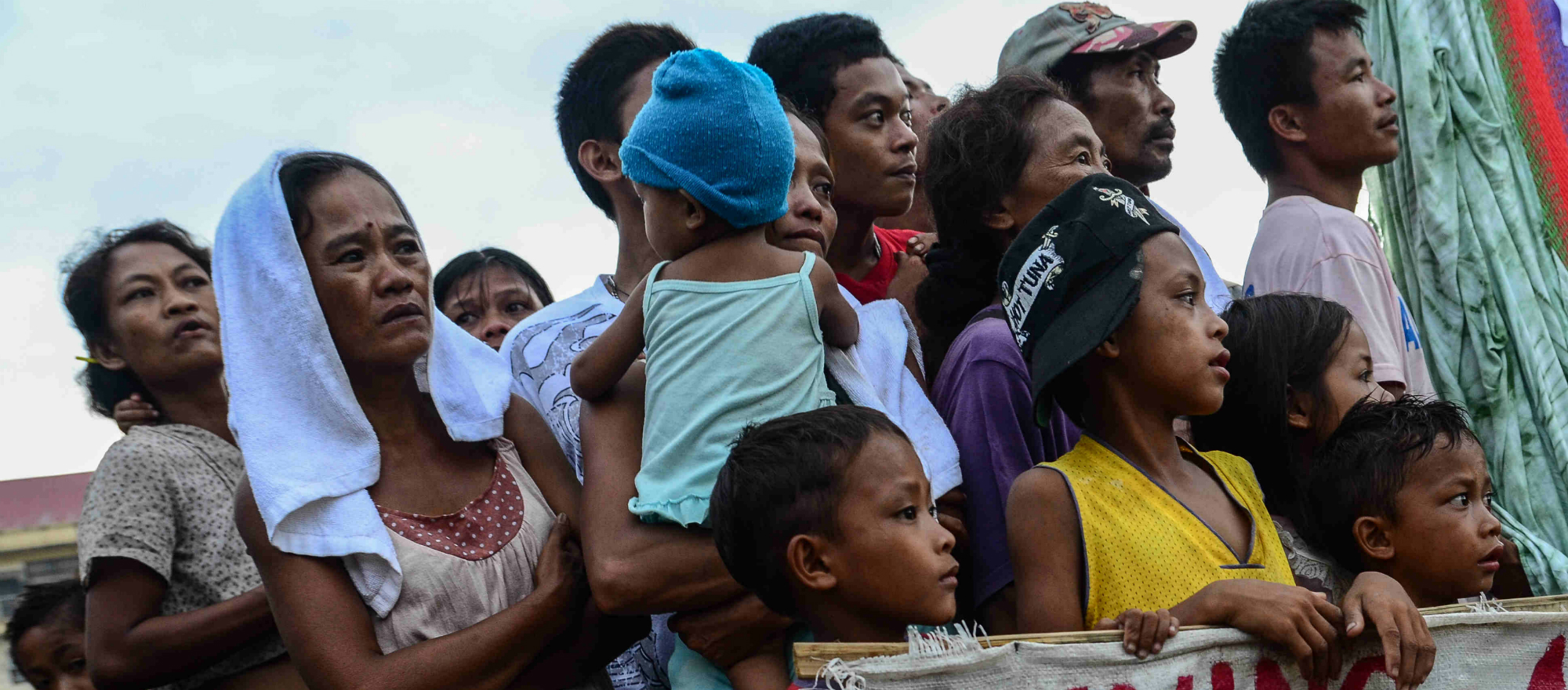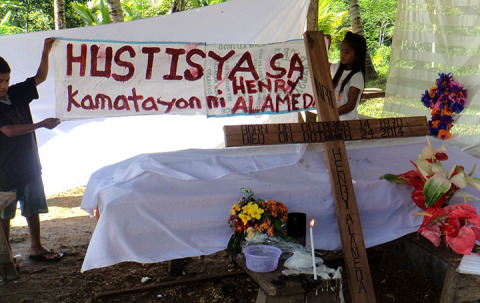We dream of peace: Life at the Tandag refugee camp
More than a month into their evacuation from their communities in Lianga, Surigao del Sur after three of their leaders were murdered by government-sanctioned paramilitary groups, the Lumad bakwit long to return home and live in peace. Multi-awarded photojournalist Raymond Panaligan photographed their plight and struggles.

[cycloneslider id=”tandag-evacuees”]
“We suffer day and night here at the stadium.”
Echoes the note written on a billboard near the gates of the Tandag Sports Complex. Close to 3,000 Lumad indigenous people were forced to seek refuge here due to continued military and paramilitary presence in the Lumad’s ancestral lands.
Military presence in the ancestral lands has long been suspected to be part of the government’s groundwork for the intrusion of mining companies. It is not a secret that multinational mining companies have been eager to exploit the mineral-rich lands of the Lumad.
On September 1, paramilitary forces murdered Lumad school administrator Emerito Samarca and community leaders Dionel Campos and Juvello Sinzo. This triggered the grim exodus.
“Sobrang niyapakan ang aming mga karapatan (They have trampled upon our rights,” said Fidela Campos, 62, mother of murdered Lumad leader Dionel (Onel). She is in pain. Her good son was killed for no apparent reason.
“Onel is not a rebel. He organized the people to acquire government projects like electrification and water systems. This will benefit the community of KM16, Diatagon,” Fidela said.
Life of internal refugees
In the refugee camp, water is rationed while dried fish and instant noodles are staple foods. The refugees suspect that the foul-smelling rice given by the Department of Social Welfare and Development (DSWD) may have caused digestive problems with some of the refugees.
They long to eat vegetables, which they seldom have in the camp. For 10 days last September, the Art Relief Mobile Kitchen Team provided hot lutong-bahay meals once a day, to the delight of the Lumad.
Life of uncertainty
Leopoldo Rodriguez, 50, said he feels weak. He is not used to idling by all day, doing nothing. Like most of the refugees, he misses the family awang or kaingin (swidden farm) where they cultivate rice, coconuts, abaca, bananas and falcata trees.
Food blockades and military encampment started in 2005 and continues up to this day.
“We do not feel safe whenever the military is around. Our movement ia compromised,” said Erwin Prado, 26.
Erwin said he is worried about the future of the Lumad schools. He is also concerned about community livelihood projects disrupted by militarization.
They both share the sentiment that the paramilitary Magahat and Bagani groups should be punished. Only then will justice be attained for their murdered brethren.
“The future is uncertain as long as the military and paramilitary forces are in our communities,” concluded Leo.
Lumad kids
There were plenty children scattered in the stadium, the crying toddlers with their mothers and fathers. Some kids played around in groups, some strolled around, and some ran errands like fetching water, getting relief goods, and firewood for their families.
Inside hot and cramped tarpaulin tents were Lumad children who continue to go to school and learn. This despite the noise, the heat, and with meager resources.
Volunteer teachers from the Lumad school Alternative Learning Center for Agricultural and Livelihood Development (Alcadev) and Tribal Filipino Program of Surigao del Sur (Trifpss) continue to administer the educational needs of the children.
‘We dream of peace’
“Kalinaw ang aming gipangandoy” which means “we dream of peace”, said a placard freshly painted near the school tent.
“We dream of peace in the land of our birth, we dream of peace in the yutang kabilin (ancestral land). The land gives us life,” said Leo, as his 7-year-old son hugged him.

